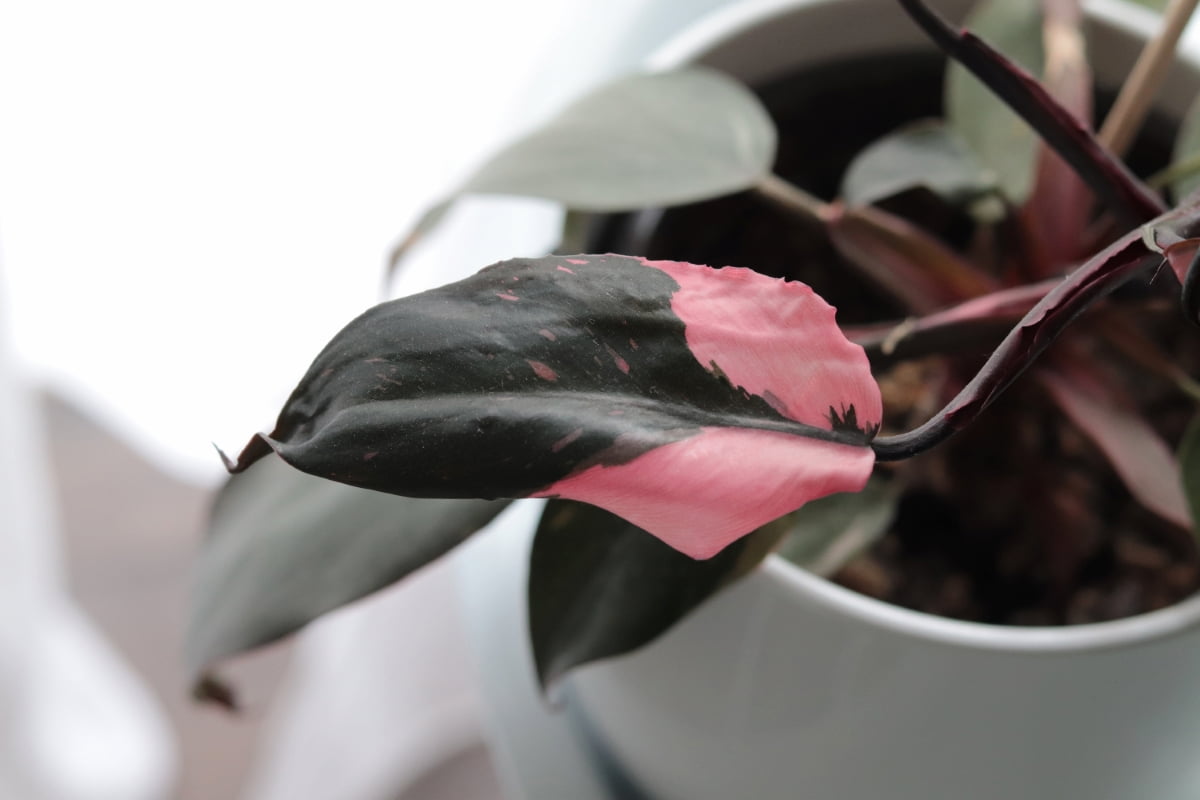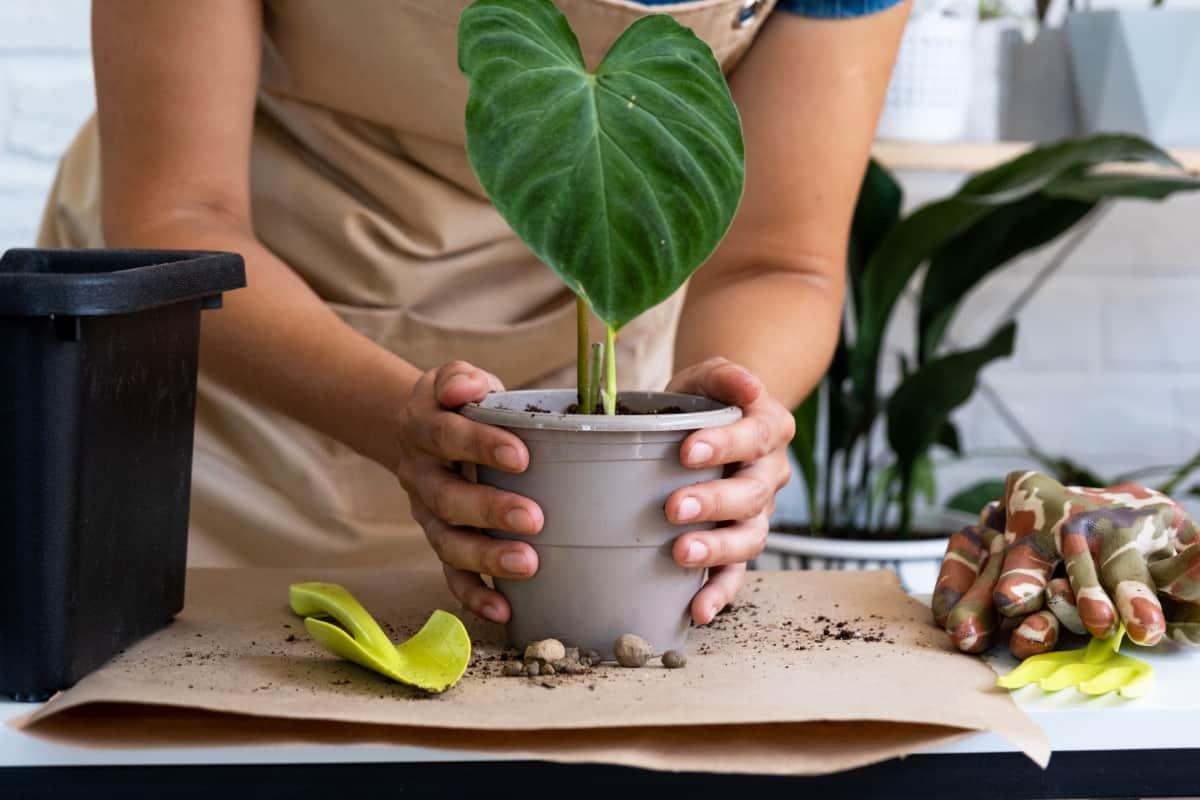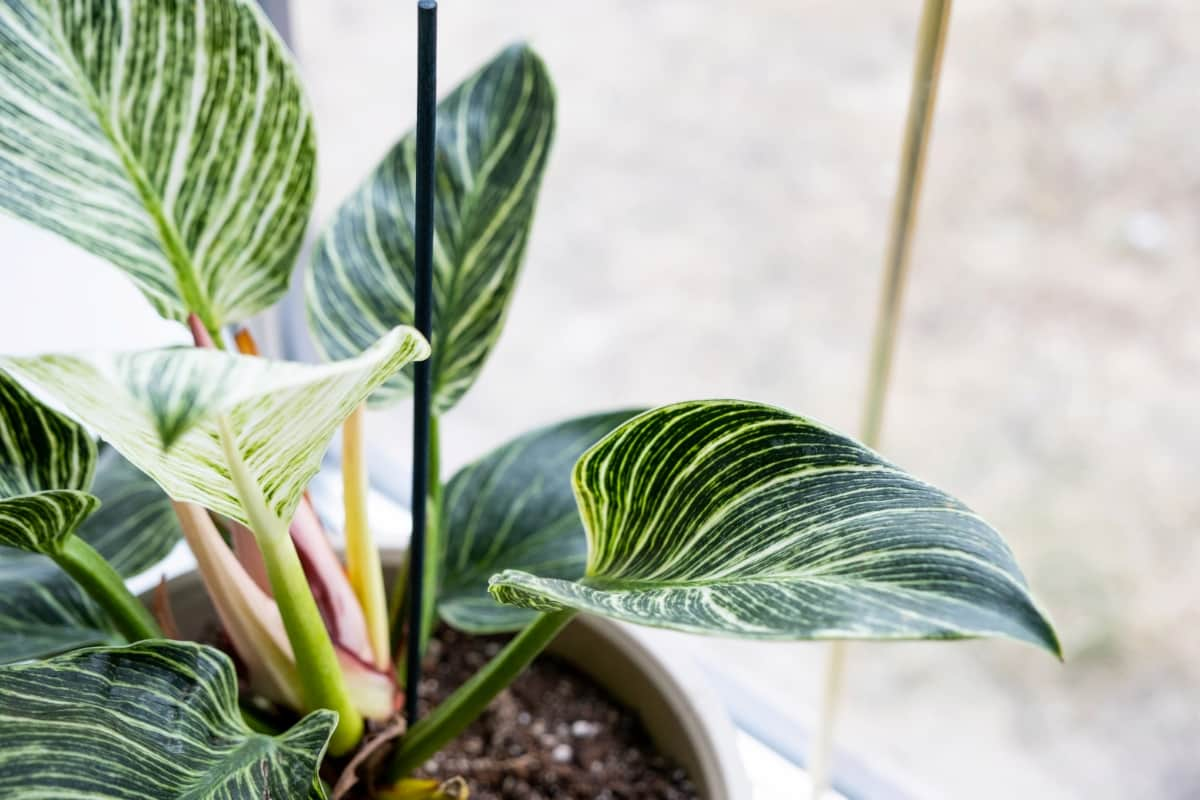Pink Princess Philodendron is a stunning plant known for its beautiful, variegated leaves. If you’re looking to expand your collection or share this beauty with others, understanding the propagation process is essential. With Pink Princess Philodendron, there are several methods you can choose from, including water propagation and soil propagation. Each method has its advantages, and it’s important to understand them before getting started.

How to Propagate Pink Princess Philodendron
Select the Right Tools and Materials
When it comes to propagating Pink Princess Philodendron, having the right tools and materials is essential for success. First off, you’ll want a sharp pair of pruning shears or scissors. These will help you take clean cuttings from the parent plant without causing damage. Make sure they’re clean and sterilized beforehand to prevent any potential diseases. Next up, you’ll need some rooting hormone powder or gel. Simply dip the freshly cut ends of your stem in the rooting hormone before planting them.
For water propagation, grab a clear glass jar or vase that allows light to penetrate through. If you prefer soil propagation, make sure to have some well-draining potting mix on hand. Whether it’s natural sunlight or artificial grow lights, providing adequate light is essential for the healthy growth and development of your propagated plants.
Choose the Ideal Propagation Method
When it comes to propagating your Pink Princess Philodendron, you have a few different options to choose from. One popular propagation method is water propagation. This involves placing the cuttings in a jar or glass of water until roots begin to form. Water propagation is great because it allows you to monitor root growth and adjust as needed easily.
Another option is soil propagation. With this method, you simply place the cuttings directly into moist potting soil and provide them with optimal conditions for growth. Soil propagation can be a bit more hands-on than water propagation, but many people prefer this method because it mimics the natural environment of the plant.
Prepare the Parent Plant for Propagation
Preparing the parent plant for propagation is an essential step in successfully propagating the Pink Princess Philodendron. Before diving into the process, it’s important to ensure that your parent plant is healthy and thriving. Start by examining the parent plant for any signs of disease or infestation. Look out for yellowing leaves, brown spots, or unusual growth patterns.
Ensure it receives adequate sunlight and water according to its specific needs. To encourage new growth on the parent plant, consider pruning back any leggy or overgrown stems. This will not only promote healthier foliage but also provide you with suitable cuttings for propagation. Make sure that your tools are clean and sharp before taking any cuttings from the parent plant. This will minimize damage and prevent potential infections from spreading to both the parent and propagated plants.
Take Cuttings from the Parent Plant
To successfully take cuttings, you’ll need sharp pruning shears or scissors. Additionally, having a sterilized blade ensures a clean cut, which promotes faster and more successful rooting. When selecting which stems to take as cuttings, look for healthy growth with at least two nodes present. Nodes are those small bumps on the stem where leaves emerge. Cutting just below a node gives your cutting a higher chance of developing roots.
To actually take the cutting, make sure your tools are positioned at an angle when making each snip. This helps maximize surface area for water absorption and encourages root development. After taking your desired number of cuttings, it’s important to remove any lower leaves near the bottom of each stem before proceeding with rooting them in water or soil.
Root the Cuttings in Water or Soil
Rooting the cuttings of pink princess philodendron is a crucial step in propagating these beautiful plants. Water propagation is a popular choice for many plant enthusiasts because it allows you to monitor the development of roots closely. To root the cuttings in water, simply place them in a glass container filled with clean water.
Make sure that at least one node (the point where leaves emerge) is submerged in the water. On the other hand, if you prefer a more traditional approach or want to skip the hassle of transferring rooted cuttings later, soil propagation might be your preferred method. Prepare small pots or trays filled with well-draining potting mix.
In case you missed it: How to Grow and Care for Philodendrons: Planting Instructions

Make holes using your finger or a pencil and gently insert each cutting into its hole. Regardless of which method you choose, it’s important to provide proper care during this rooting stage. Keep an eye on moisture levels – don’t let the water completely evaporate when propagating in water or allow the soil to dry out when propagating directly in the soil.
Provide Optimal Care for Newly Propagated Plants
Make sure that your newly propagated plants are placed in an area with bright but indirect light. Direct sunlight may cause damage or stress to the delicate roots. Watering is another important aspect of caring for your pink princess philodendron cuttings. Keep the soil moist but not waterlogged.
Overwatering causes root rot, while underwatering can dry out the fragile roots. Maintaining humidity around your propagating plants is also vital. Mist the leaves to keep them hydrated. Regularly monitor and inspect your new plantings for any signs of pests or diseases. Avoid transplanting your newly propagated plants too soon. Give them enough time to establish strong root systems before moving them into larger pots.
Monitor Growth and Development
One key aspect to monitor is the appearance of new leaves. These indicate that your plant is thriving and actively growing. Watch for vibrant green foliage emerging from the nodes of the stem cutting. As more leaves unfurl, you can be confident in knowing that your propagation efforts are successful. In addition to leaf growth, pay attention to the general condition of the plants. Look out for any signs of stress or disease, such as wilting or discoloration.
Catching these issues early on allows you to take prompt action and provide appropriate care. Another aspect worth monitoring is root development. If you initially rooted your cuttings in water, keep an eye on how quickly roots form and grow. Once they reach a sufficient length (typically several inches), it’s time to transfer them into soil for continued growth.
As your propagated plants continue to thrive, consider rotating them occasionally so all sides receive adequate sunlight exposure. This helps ensure even growth throughout the plant. Regularly assess whether your propagated Pink Princess Philodendrons require additional nutrients by observing their overall vigor and coloration. Adjust fertilization accordingly based on any deficiencies or excesses noted during this observation period.
Transfer Propagated Plants to Larger Containers
Once your propagated Pink Princess Philodendron has grown and established its roots, it’s time to give it more space to thrive. Transferring the plants to larger containers is an important step in their journey of growth. When selecting a new container, opt for one that is larger than the current pot size. This will allow the roots to have enough room to spread out and grow. Make sure the container has drainage holes at the bottom to prevent waterlogging.
Before transferring, gently loosen the soil around the plant’s root system. Remove the plant from the pot, being mindful not to damage any delicate roots or leaves in the process. Place the potting mix at the bottom of the new container. Then, position your propagated plant in its center, making sure it sits at about the same level as before. Lightly press down around the base of your plant for stability.
In case you missed it: How to Propagate Coleus: Grow from Cuttings and Leaves

After transferring, water your newly potted Pink Princess Philodendron thoroughly, but avoid overwatering. Keep an eye on moisture levels and only water when needed. As your propagated plants continue growing in their new containers, make sure you provide regular care by monitoring watering needs, checking for pests or diseases, and occasionally fertilizing according to instructions specific for philodendrons.
Conclusion
Propagating Pink Princess Philodendron is an enjoyable journey that allows you to expand your plant collection while creating more opportunities for these beautiful plants to thrive in different corners of our homes or gardens. With some patience, love, and care, you’ll soon witness new leaves unfurling on your propagated Pink Princess Philodendrons – a truly satisfying sight for any plant lover.
- Feed Your Flock for Less: Top 10 Tips to Save on Chicken Feed
- Ultimate Guide to Ossabaw Island Hog: Breeding, Raising, Diet, and Care
- Hatching Answers: The Top 10 Reasons Your Chickens Aren’t Laying Eggs
- Eggs and Economics: Breaking Down the Cost of Raising Backyard Chickens
- Defend Your Greens: Proven Methods to Keep Iguanas Out of Your Garden
- Ultimate Guide to Cinnamon Queen Chicken: A Comprehensive Guide for Beginners
- Ultimate Guide to California Tan Chicken: Breeding, Raising, Diet, Egg-Production and Care
- Ultimate Guide to Marsh Daisy Chicken: Breeding, Raising, Diet, and Care
- 10 Types of Chicken Farming Businesses You Can Start for Profits